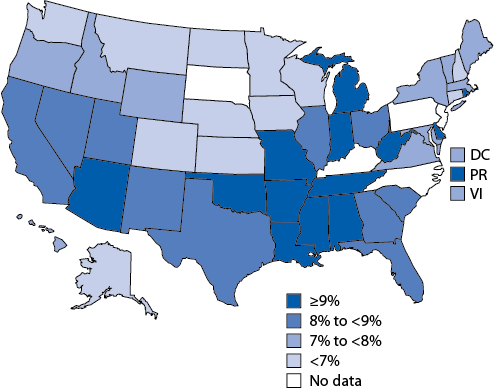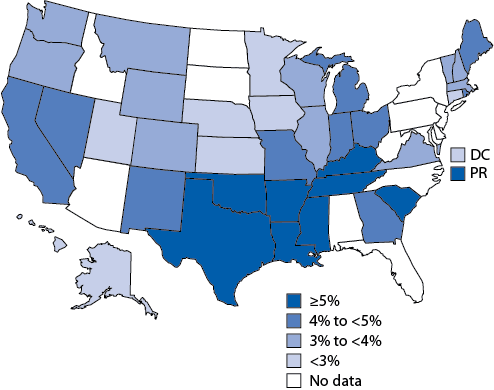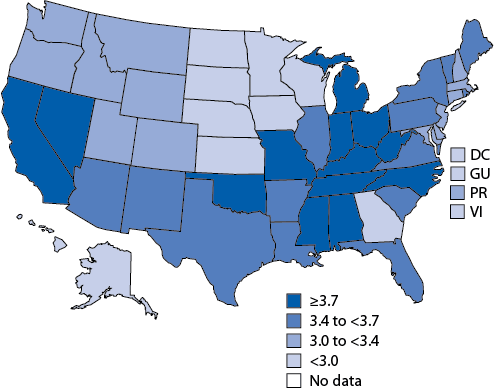Figures
This website is archived for historical purposes and is no longer being maintained or updated.
CDC Report: Mental Illness Surveillance Among Adults in the United States
Source: Centers for Disease Control and Prevention. [Mental Illness Surveillance Among Adults in the United States.] MMWR 2011;60(Suppl).
Figure 1
Prevalence of current depression* among adults aged ≥18 years, by state quartile† — Behavioral Risk Factor Surveillance System, United States, 2006§

- * Patient Health Questionnaire-8 severity score of ≥10.
- † Quartiles based on point estimates.
- § For Arizona, Colorado, Idaho, Illinois, Massachusetts, New York, and Ohio, data are from 2008.
Figure 2
Prevalence of serious psychological distress* among adults aged ≥18 years, by state quartile† — Behavioral Risk Factor Surveillance System, United States, 2007§

- * Kessler-6 score of ≥13.
- † For Tennessee and Utah, data are from 2009.
- § Quartiles based on point estimates.
Figure 3
Mean number of mentally unhealthy days* during past 30 days among adults aged ≥18 years, by state quartile — Behavioral Risk Factor Surveillance System, United States, 2009

- * Survey question: "Now thinking about your mental health, which includes stress, depression, and problems with emotions, for how many days during the last 30 days was your mental health not good?"
- Page last reviewed: December 2, 2013 (archived document)
- Content source:


 ShareCompartir
ShareCompartir